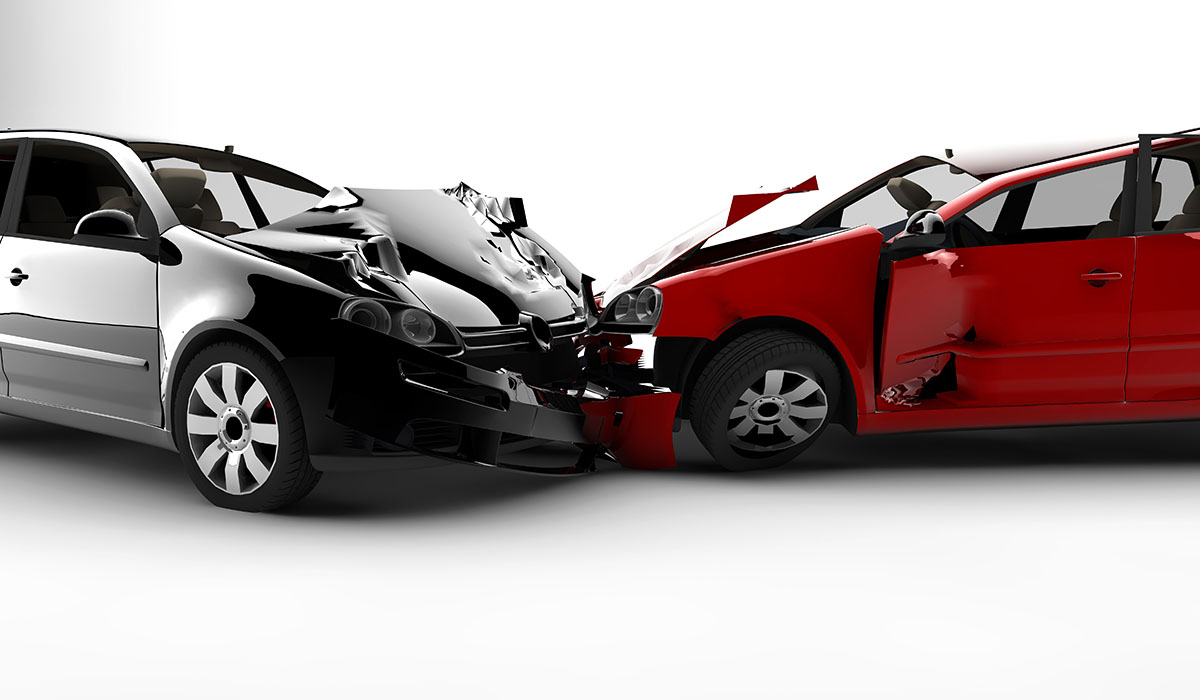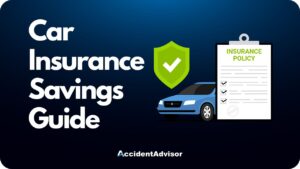Head-on collisions are one of the most dangerous types of accidents that can happen on the road. They are also some of the most difficult to handle emotionally and legally. When two vehicles collide head-on, the force of the impact can be catastrophic.
Head-on collisions often occur at high speeds and can result in serious injuries or even death. If you or someone you love is involved in a head-on collision, it is crucial to understand what happens in these accidents and how to handle the aftermath best.
This article will provide an overview of head-on collisions. This includes what happens during these accidents and how to handle the situation if you’re involved.
Table of Contents
- What is a Head-On Collision?
- What Happens in a Head-On Collision?
- Common Causes of head-on collisions
- What Kinds of Injuries Do Head-On Collisions Cause?
- Establishing fault in a head-on collision
- How do you prove fault in a head-on collision?
- Fault Systems by State
- Determining damages in a head-on collision
- Crucial evidence to prove liability in a head-on collision
- Summary
What is a Head-On Collision?
A head-on collision is a type of car crash occurs when the front ends of two vehicles hit each other. This can happen when two cars are moving in opposite directions or when one car hits a stationary object like a tree or a wall. Head-on collisions can be hazardous because of the high speeds at which the two vehicles travel.
According to the latest statistics from the US Department of Transportation, there were nearly 5,000 head-on collisions in the United States in 2021, representing a rate of about 9 per 100,000 people. In comparison, the national fatality rate for car crashes was about 40 per 100,000 in 2021. This means that head-on collisions are responsible for a small fraction of all car crashes but still account for many deaths.
Rural areas tend to have higher rates of head-on collisions than urban areas. For example, the head-on collision rate in rural areas was about 12 per 100 000 people in 2021, while the rate in urban areas was about 5 per 100,000 people. This difference may be due to traffic patterns and driving habits in rural and urban areas.
What Happens in a Head-On Collision?
In a head-on collision, both vehicles are moving toward each other when they hit. The impact is twice as hard as if only one vehicle were moving. The impact forces are strong enough to cause severe damage to both cars.
Both drivers are subjected to a force equal to the vehicle’s weight multiplied by the speed of the collision. This is called the deceleration force, and it can be fatal.
The deceleration force is so great that it can cause the driver’s body to slam into the steering wheel, the dashboard, or the windshield. The impact can also cause the head and chest of the driver in front to hit the dashboard with such force that it can break bones.
In addition to physical injuries, a head-on collision can also cause psychological trauma. Many drivers feel guilt or shame after crashes and may be afraid to drive again.
Victims of this heinous incident frequently experience a lifetime of medical and physical issues. A person may be unable to do even the most basic of routine duties.
Common Causes of head-on collisions
The following are the most common causes of head-on collisions:
• Distracted driving: Cell phone use and texting are two of the most harmful distracted driving behaviors that drivers participate in. Other things that can lead a motorist to miss crossing the center lane include eating and drinking, glancing at a GPS, or operating the radio or other instrument controls.
• Drunk driving: While the dangers of driving while intoxicated or high on drugs are widely understood, many drivers disregard the risks and go nevertheless. Intoxication impairs driving skills and can lead to a motorist making deadly mistakes or engaging in reckless driving, resulting in a head-on collision.
• Speeding: Speeding is risky, especially around corners, as it can cause a motorist to lose control of his car and stray into the middle lane.
• Unsafe passing: Drivers who underestimate the time it takes to overtake on a double-lane road in a no-pass zone safely may be unable to avoid colliding with an approaching car.
• Drowsy driving: A driver may stray into an oncoming car without even realizing it until the crash wakes him up struggling to stay awake, or falls asleep while driving.
• Avoiding animals: Animals can run into the road unexpectedly. A collision may occur when a driver swerves to avoid the animals and hits oncoming traffic.
What Kinds of Injuries Do Head-On Collisions Cause?
Every head-on collision is extremely dangerous. They cause severe life-threatening injuries and can also lead to permanent disabilities. Some possible injuries include:
• Traumatic brain injuries: They can occur when the head is suddenly and violently thrown forward or to the side, causing the brain to collide with the inside of the skull. This can result in bruising, bleeding, or swelling of the brain, leading to serious long-term consequences. Head-on collision Victims with traumatic brain injuries may never fully restore their quality of life before the accident.
• Back injuries- A head-on collision can easily injure back muscles, discs, and nerves throughout the spinal column. Back injuries can cause long-term mobility loss and crippling discomfort in accident victims.
• Neck injuries- The force can cause the neck to snap back and forth, resulting in strain, sprains, and even fractures. In some cases, the neck injury can be so severe that it results in paralysis. Even if the paralysis is only temporary, it can still significantly impact the victim’s life.
• Bone injuries- Complex fractures may involve surgery and a lengthy recuperation period. Even yet, the most severe fractures can result in a long-term disability that limits an individual’s capacity to work and enjoy life.
Establishing fault in a head-on collision
Fault and liability are concepts often used interchangeably, but they have different meanings. Fault refers to who is responsible for the accident, while liability refers to who is legally responsible for the damages caused.
The at-fault driver’s insurance company should pay your claim if you were hurt or lost a family member in a head-on collision. However, the first step is to prove that the other motorist was at fault, and the plaintiff bears the burden of proving that the at-fault driver owes them.
The cause of the accident will usually determine who is legally liable for the damages. Here are the essential things to look for:
• Duty of care: The law requires every driver to avoid causing injury to others. This involves being awake, sober, rested, and focused on the road. A driver under the influence of alcohol or drugs is not performing their duty of care.
• Negligence: A negligent driver’s actions go beyond what a reasonable person would do. This could include driving the wrong way down a one-way street, entering a freeway through an off-ramp, or driving too fast.
• Causes: In an automobile accident, this will be rather basic. Any personal injury claim requires the plaintiff to demonstrate that the defendant’s actions directly caused their injuries.
How do you prove fault in a head-on collision?
A driver will almost always admit they were at fault for creating a head-on collision. However, there are situations when the drivers engaged in an automobile collision have conflicting accounts of what occurred, or they may lie about what occurred in an attempt to transfer blame.
In other circumstances, the impact of the vehicle accident is so severe that neither of the drivers involved remembers what happened. In each of these circumstances, physical evidence will aid in determining who is to blame for a head-on collision. It is never easy to establish, however.
You should contact a personal injury attorney as soon as you can. They will be able to guide you on the proper procedures to take after a head-on collision, such as:
• Remain at the scene- You should never leave the site of the collision. Else it could be interpreted as a hit-and-run.
• Call an ambulance- You should call an ambulance immediately if you or anybody else is injured.
• Call the police- It is your responsibility to summon authorities to the scene of a car accident as fast as you can so that they compile the accident report.
• Collect evidence- You should try to collect as much evidence as possible from the scene of the car accident if you can. Photos of the site, the damage on the vehicles, injuries, and skid marks are evidence. It would be best if you also tried to obtain the names, addresses, and phone numbers of witnesses to the collision.
• Hire a personal injury attorney- You should contact a personal injury attorney as soon as possible to handle your case. To schedule a free consultation, contact [Company Name].
Fault Systems by State
Each state has its definition of fault in head-on collisions, so it is essential to speak with a personal injury attorney in your state about your specific case. There are four types of faults in head-on collisions:
• Pure Contributory Negligence: Contributory negligence prevents plaintiffs from benefiting from the defendant’s negligence if they were negligent in causing the harm. The plaintiff is responsible for their damages.
• Pure Comparative Negligence: Pure comparative negligence allows a court to apportion damages based on the parties’ relative fault. Even if a plaintiff is 99% at fault, the court can still award damages to the plaintiff if the defendant is 1% at fault.
• Comparative Fault (50% Rule): The driver found to be 50% or more at fault is not only not entitled to any damages, but they may also be held liable for any damages caused by their vehicle to the other driver’s vehicle or person.
• Modified Comparative Fault (51% Rule): The plaintiff cannot receive damages under the 51 percent bar rule if they are found to be 51% or more at fault. If the court determines that the plaintiff was comparably negligent, monetary damages will be lowered by the plaintiff’s share of fault.
Determining damages in a head-on collision
The types of damages recognized by the law in the event of a head-on collision include:
• Property damage: This could include damage to the vehicle involved and any other property in the way of the collision. These may consist of broken guardrails, trees, or electrical poles.
• Physical injury damages- Medical treatment costs for an injured person, including hospitalization, ambulance or airlift transport, ongoing therapies, prescriptions, medical equipment, doctor visits, lost earnings, rehabilitative care, pain and suffering, and future connected expenses.
• Wrongful death damages- The next of kin of a wrongful death victim might seek compensation. Emergency medical care, burial fees, loss of future income, and loss of consortium for family members would determine the cost of wrongful death damages. At the same time, the criteria for assessing liability would remain the same.
Crucial evidence to prove liability in a head-on collision
Following a car accident, you can take action to bolster your case. The nature of head-on crashes increases the likelihood of serious injury for those involved. The first step should be to get help for anyone who has been injured.
Begin gathering evidence and acquiring witnesses after getting emergency medical treatment and are competent to deal with legal and insurance issues. Also, get a copy of the police report and all medical information related to the accident. These will help to establish what happened and who was at fault.
In most states, fault in a head-on collision is determined by the causes of the crash. If the other driver was at fault, you might be able to sue them for damages.
It is also advisable to get a personal injury attorney, as they will be able to navigate the legal process and ensure that you receive the compensation to which you are entitled. Your lawyer will seek to obtain additional information, recruit specialists, and determine how much compensation you deserve.
Summary
In a head-on collision, both vehicles travel in the same direction and crash into each other. It can also be between a car and a stationary object. Head-on collisions are some of the most dangerous car accidents, often resulting in serious injuries or fatalities.
Speeding, distracted driving, and driving under the influence of alcohol or drugs are the major factors contributing to a head-on collision. It can also result from fatigue and avoiding animals on the road.
If you are involved in a head-on collision, it is crucial to stay calm and call 911 immediately. Do not try to move your vehicle or get out of the car unless it is safe. Be sure to exchange insurance information with the other driver and gather evidence of the accident scene if possible.
It is also vital to seek legal help as soon as possible. An experienced attorney can help you navigate the complex legal process and ensure you receive the compensation you deserve.

Rocky Horton
Author
Rocky Horton is a health and safety expert from Chapel Hill, NC. He is the founder of AccidentAdvisor and has been featured in Forbes, Bloomberg, and other publications. Learn more.













